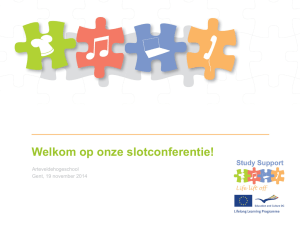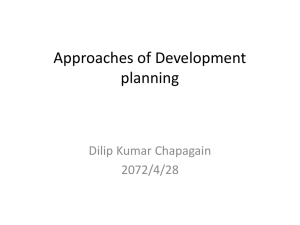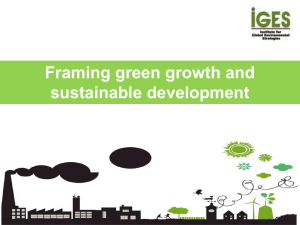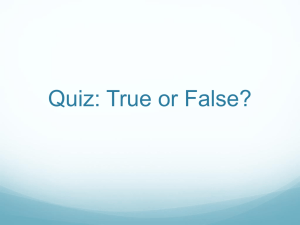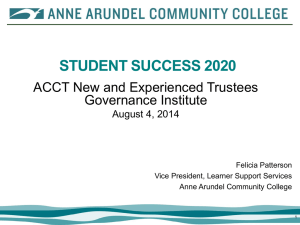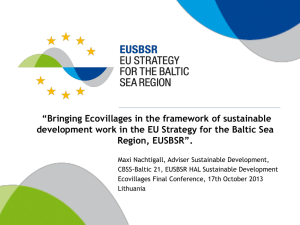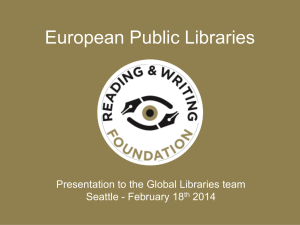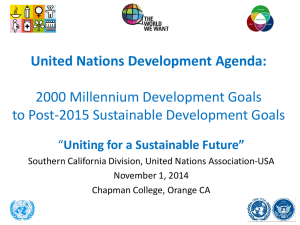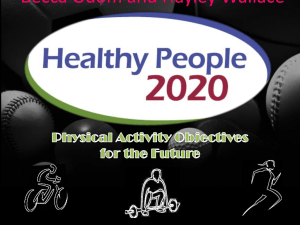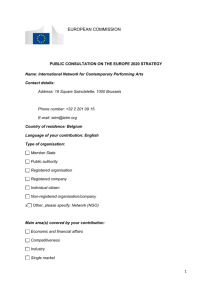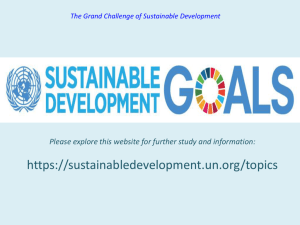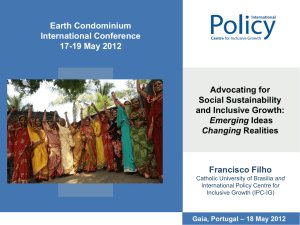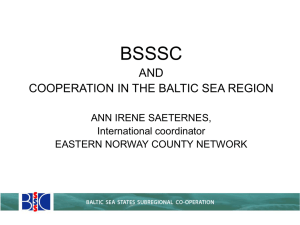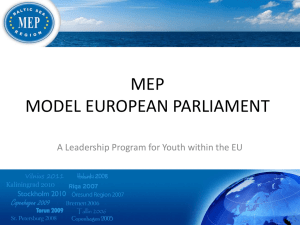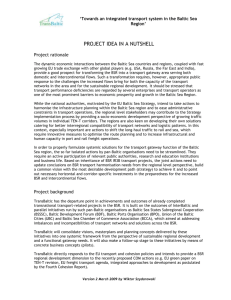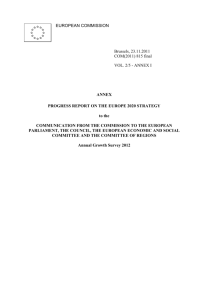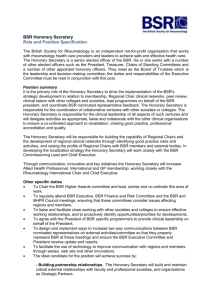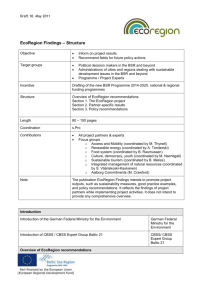See the whole presentation here /ppt
advertisement
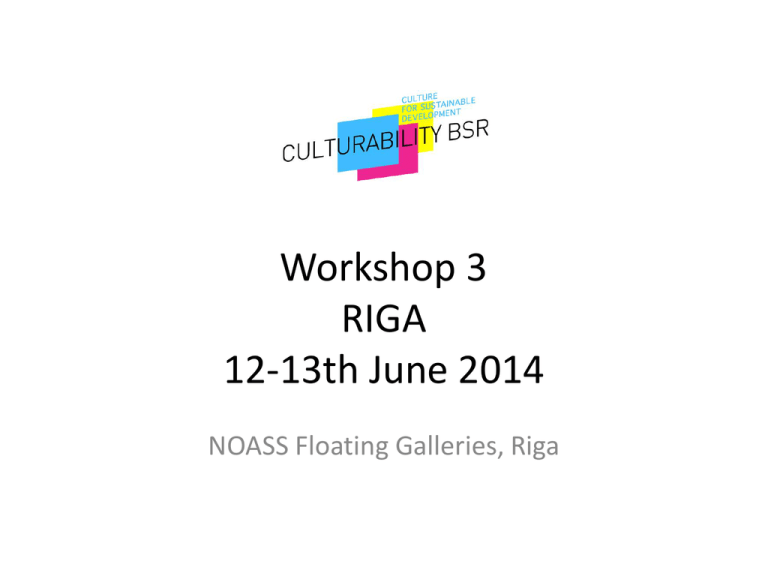
Workshop 3 RIGA 12-13th June 2014 NOASS Floating Galleries, Riga Goals for Culturability • To build knowledge on culture as a driver for sustainable development • Through showcasing and demonstration encourage multiplication of good/best/next practices and from that • Develop a number of high quality high impact projects in the field for culture and sustainability in the Baltic Sea Region. Focus • The focus of the project and its follow-up will be to build cooperation between core stakeholders within the creative industries, urban development and social innovation on efforts, which use culture to integrate the environmental, economic and the social dimension of sustainability. • Focus of workshops: – Workshop 1: The Challenges – Workshop 2: Cross fertilizing ideas and projects – Workshop 3: High quality, high impact projects Workshop 3: High Quality – High Impact • Great idea, great plan, great involvement • Vision: Culture as a driver for an inclusive circular economy in the BSR • Goals: • EU BSR - specific relation to be clarified • EU 2020 Goals – specific relation to be clarified • Aims and objectives - Expected results and outcomes: • Numbers to be clarified • Narratives to be articulated • Organisation: Co-Ownership • Making connections to improve co-ownership at this workshop • Budget/Funding: • Clarifying expectations: Own + local/national/regional/EU • Quality and impact by clustering and evaluation Presented 13.45 – 15.00: Workshop 3: High quality – high impact • Artistic and creative entrepreneurship for sustainable development – GUTS (proposal in progress) – Baltic House – towards a circular culture (proposal in progress) – Urcycles (short scenario/statement) 11 22 31 • Digital spaces for creativity/lifestyle/behaviour and sustainable development – Good Deed App (statement) + abstract of proposal SUPROS which is inspiration – Gaming and urban/rural/BSR development (statement) 33 35 • Cultural mapping, planning and engagement and sustainable urban/regional development – Green Box (short scenario/statement) 37 – Baltic Live - Liveable Cities/Regions (information on project in progress) 39 Guide for working groups 17.45-19.30+ 9-10 and reporting Friday 10.00 Questionnaire The following questions is a guide for what to clarify and report on in the working groups. Reports shall be given from 10 am on the second day of the workshop. The reports shall also be handed in in writing. 1. Title of project: 2. What is the aims and objectives ? 3. What will the main activities be ? 4. What will be the concrete results/outputs ? – – – Quantitative results: Qualitative results: Please provide a narrative (case on concrete person benefitting from the future project) of what a good qualitative result would be ? 5. Who will be the main organisers ? – – What different roles can possible institutional co-organisers have How can municipal/regional authorities contribute ?/play a role ? 6. How can this project be financed ? – – By whom ? How much in-kind/own contributions is expected ? (if funding from EU is expected remember to clarify relation with EUBSR + EU2020) 17.15-17.45 and beyond Dating arrangements • This workshop is last ”easy” chance to make connections with those sharing interest in same projects EU 2020 Goals SMART, SUSTAINABLE AND INCLUSIVE GROWTH The Europe 2020 strategy is about delivering growth that is: smart, through more effective investments in education, research and innovation; sustainable, thanks to a decisive move towards a low-carbon economy; and inclusive, with a strong emphasis on job creation and poverty reduction. The strategy is focused on five ambitious goals in the areas of employment, innovation, education, poverty reduction and climate/energy. The 5 targets for the EU in 2020: • 1. Employment – • 2. R&D / innovation – • greenhouse gas emissions 20% (or even 30%, if the conditions are right)lower than 1990 20% of energy from renewables 20% increase in energy efficiency 4. Education – – • 3% of the EU's GDP (public and private combined) to be invested in R&D/innovation 3. Climate change / energy – – – • 75% of the 20-64 year-olds to be employed Reducing school drop-out rates below 10% at least 40% of 30-34–year-olds completing third level education 5. Poverty / social exclusion – at least 20 million fewer people in or at risk of poverty and social exclusion EU 2020 Goals Features of the targets • They give an overall view of where the EU should be on key parameters by 2020. • They are translated into national targets [see link] so that each Member State can check its own progress towards these goals. • They do not imply burden-sharing – they are common goals, to be pursued through a mix of national and EU action. • They are interrelated and mutually reinforcing: – educational improvements help employability and reduce poverty – more R&D/innovation in the economy, combined with more efficient resources, makes us more competitive and creates jobs – investing in cleaner technologies combats climate change while creating new business/job opportunities. EU Flagships supporting Flagship initiatives • Europe has identified new engines to boost growth and jobs. These areas are addressed by 7 flagship initiatives. • Within each initiative, both the EU and national authorities have to coordinate their efforts so they are mutually reinforcing. Most of these initiatives have been presented by the Commission in 2010. Smart growth • Digital agenda for Europe • Innovation Union • Youth on the move Sustainable growth • Resource efficient Europe • An industrial policy for the globalisation era Inclusive growth • An agenda for new skills and jobs • European platform against poverty EU BSR Action Plan The culture of on Inclusive Circular Economy
